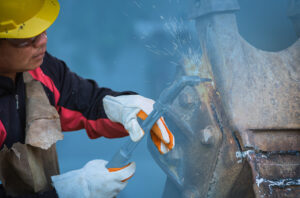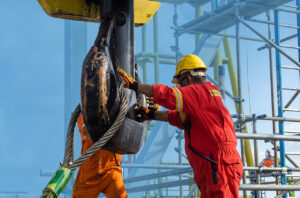The Standing Committee On Structural Safety (SCOSS) has issued a safety alert regarding the structural safety of glass used in balustrades e.g. where glass panels are used as an infill between the posts and rails around a balcony or staircase.
Any barrier in a building that is not designed and built to an appropriate standard may pose a serious risk to safety especially where it is used to prevent falls from height. Glass is frequently used as a barrier in buildings for example to form an internal partition or on the exterior such as the floor to ceiling windows typically found in car showrooms.
Such barriers tend to be manufactured as complete systems by designers who are much more aware of the safety issues. However SCOSS report that balustrades are more likely to be designed and installed on an ad hoc basis and in some cases less thought may be given to the wider safety critical issues. This has led to a number of issues, the SCOSS alert gives the example of a glass panel in a balustrade at a school in Manchester which failed in March 2019, allowing a pupil to fall from height through the exposed gap on to a concrete surface below.
The SCOSS alert is aimed at property owners and those responsible for managing buildings which either have existing barrier systems where they are considering installing new barrier systems. The alert gives detail on the background to the issue, relevant regulations, what should be expected from those installing such systems. The full alert can be found at: https://www.structural-safety.org/media/694762/scoss-alert-structural-safety-of-glass-in-balustrades.pdf
Where you have such barrier systems installed SCOSS recommend that regular visual inspections of the system are carried out, looking for issues such as:
- Evidence of glass-to-metal contact;
- Evidence of glass slippage, movement or distortion;
- Chips or other damage to any glass component that could lead to spontaneous breakage or reduction of load capacity;
- Corrosion of metal components or flaking of coatings which indicates that the system has not been subjected to regular inspection and maintenance;
- Missing or loose fixings;
- General movement or looseness of components.
Where damage is found or it is suspected that a system has not been properly installed then immediate action should be taken to protect the area and carry out suitable repairs.
Please speak to your normal PIB Risk management contact or get in touch using [email protected] if you have any questions about building maintenance or would like to arrange an audit of your workplace.

Employment Rights Bill – Government Publishes Implementation Roadmap

The Sun’s Out – Time To Get The Shorts Out?

Updated Gas Safety Guidance

Revised Bloodborne Viruses Guidance

New High Consequence Infectious Disease Guidance for Care Providers
